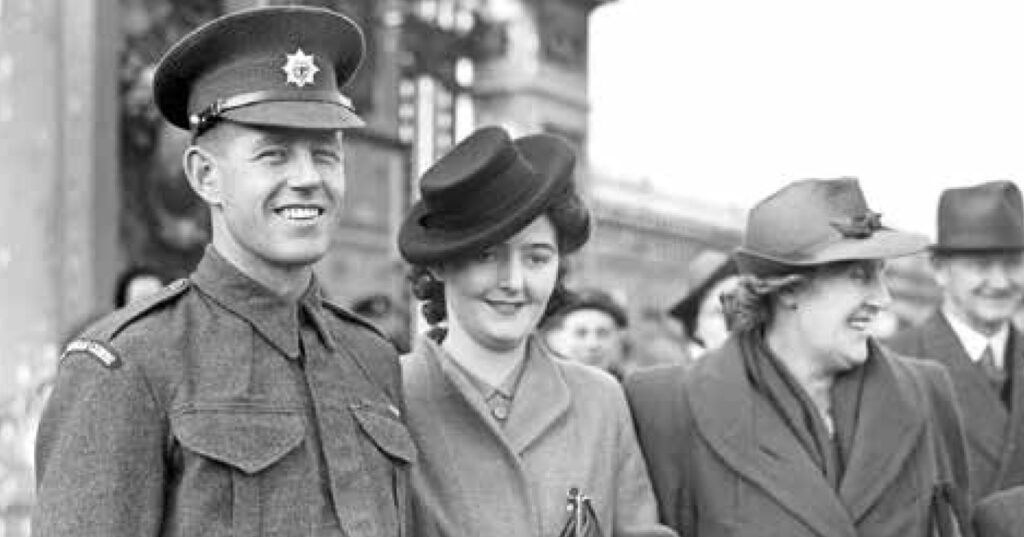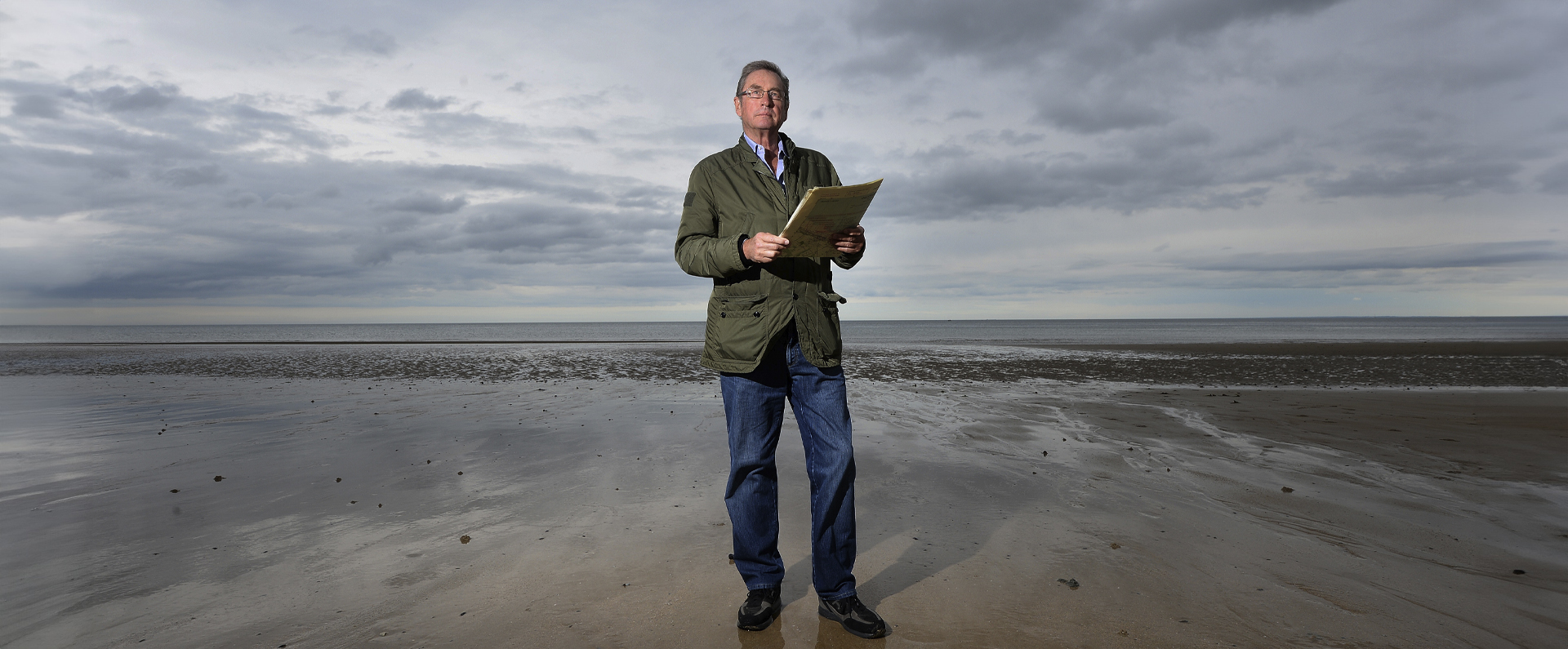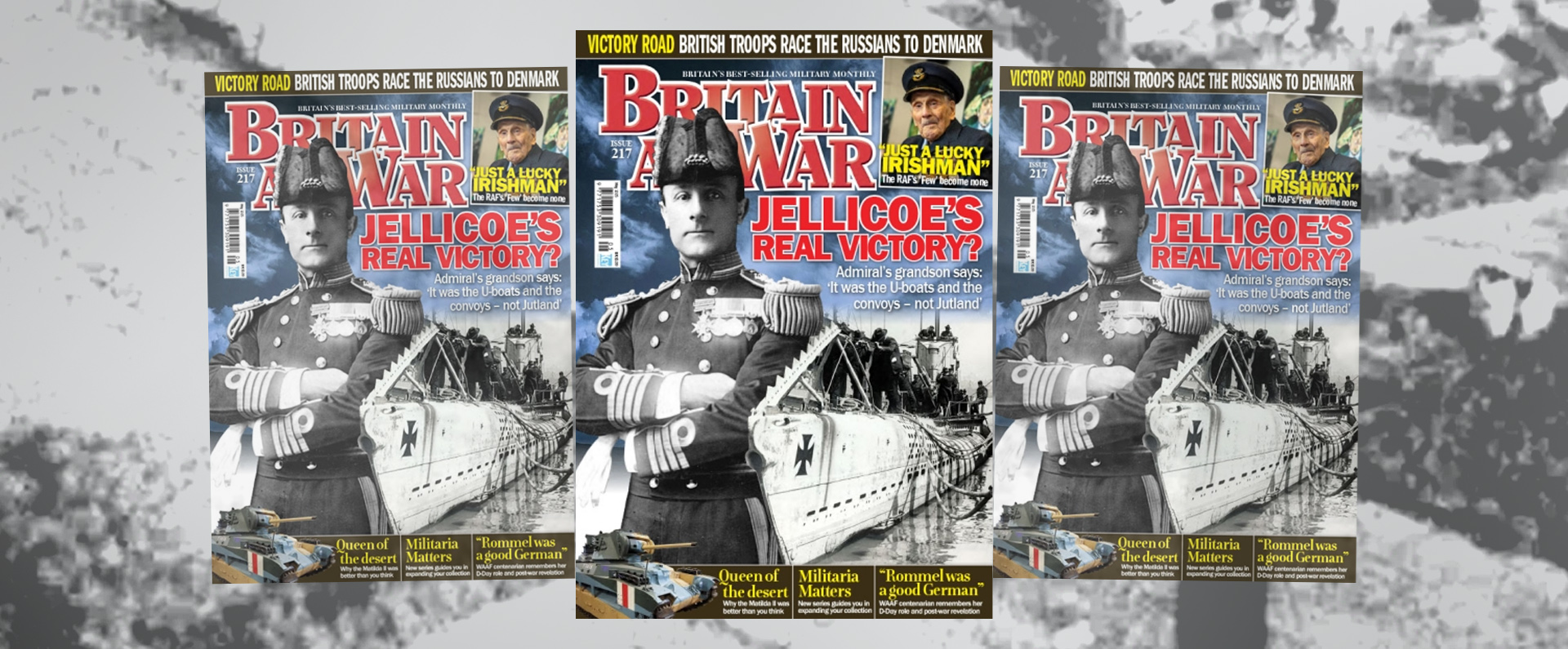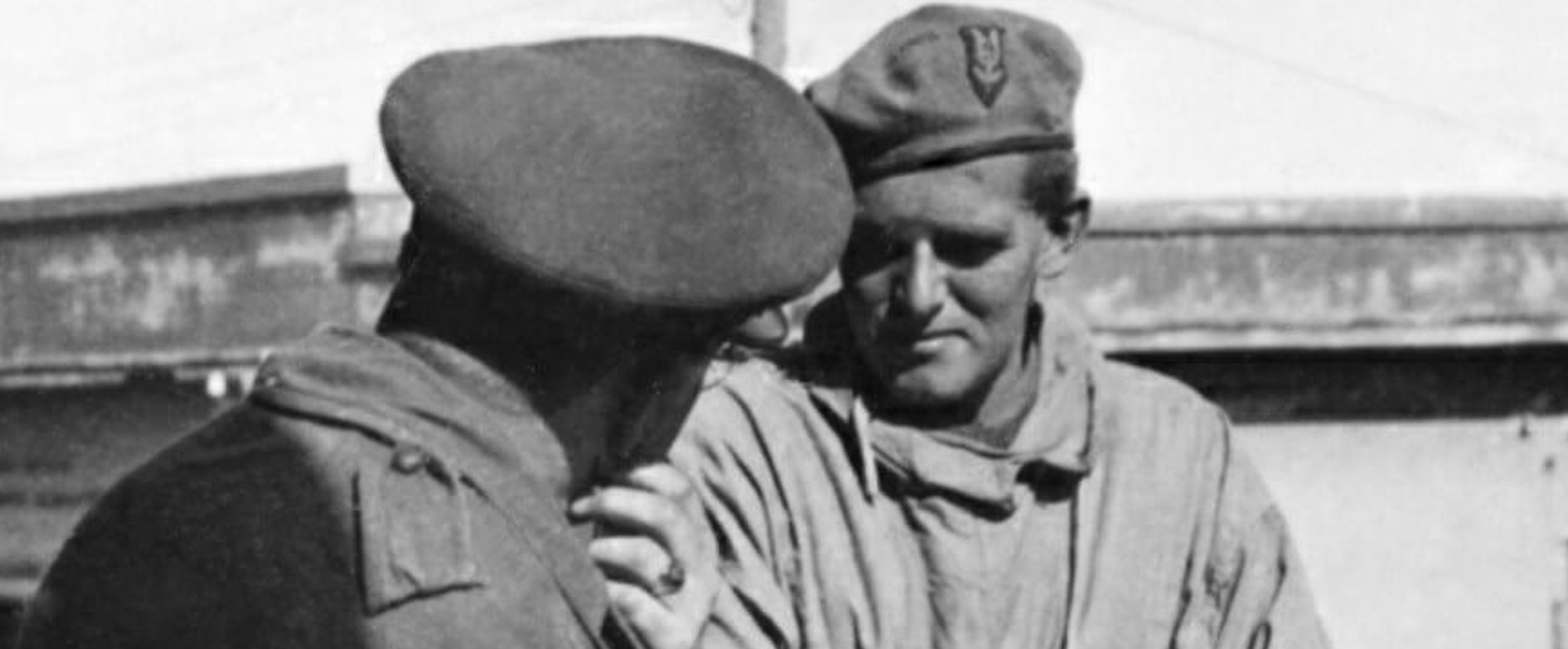
Published in Britain at War in April 2019.
Company Sergeant Major Peter Harold Wright VC
Farmer’s son Peter Wright, one of no less than 14 children, was an exceptional character whose VC has a place in the history books for two specific reasons: it was the first and only Salerno VC and, furthermore, it was uniquely upgraded from a DCM at the insistence of King George VI.
Peter Harold Wright was born in Mettingham, near Bungay, Suffolk, on 10 August 1916. His father was Gordon Wright and his mother was Helen (née Easter). Peter Wright, who had eight brothers and five sisters, was educated at Brooke Village School, Norfolk, and Woodton School, Norfolk. Initially, after leaving school, he worked on his father’s farm but he was planning a career in the police force. However, he had a change of heart and enlisted into the Coldstream Guards on 7 October 1936 and, later, joined the 3rd Battalion, serving in Egypt and Palestine from 1937-9 as a lance-corporal.
After the outbreak of the Second World War in early September 1939, he returned to Egypt and was based in Alexandria. Wright was promoted to acting lance sergeant on 1 September before being confirmed in the rank on 1 December, 1939.
On 4 August 1941, Wright was appointed as acting sergeant and he was confirmed on 21 January 1942. On 28 May 1942, Wright was wounded – above the eye – during fighting in Tobruk, Libya, and he was evacuated for hospital treatment. After nearly two months of recuperation, he rejoined his battalion on 16 July 1942. On 7 September 1942, he was promoted to acting colour-sergeant and was confirmed in this rank on 6 June 1943.
His VC action took place on 25 September 1943 when, after yet another promotion, Wright was in the rank of warrant officer class 2 – company sergeant major – aged 27 years old. The background to this remarkable VC was that Sicily had been invaded on the night of 9/10 July 1943 and formally fell to the Allies on 17 August.
The following month marked the start of the long campaign to gain control of Italy, Hitler’s southern Axis ally and the first landings on the Italian mainland took place in Calabria on the night of 2/3 September. Italy’s own armistice with the Allies was announced on 8 September, but at this point Germany still controlled most of the country and the situation was confused and dangerous. On 9 September, America’s 5th Army landed south of Salerno and, on 25 September, the 56th Division sought to advance north of Salerno as part of the break-out from the original 5th Army bridgehead.
As Wright’s citation for his first gallantry medal makes clear, he showed outstanding courage: “In Italy on the 25th September, 1943, the 3rd Battalion, Coldstream Guards, attacked the Pagliarolli feature, a steep wooded hill near Salerno. Before it reached the crest the right hand company was held up by heavy spandau and mortar fire and all the officers had become casualties.
“C.S.M. Wright, seeing that his company was held up, went forward to see what could be done. Finding that there were no officers left he immediately took charge and crawled forward by himself to see what the opposition was. He returned with the information that three spandau posts were holding them up. He collected a section and put it into a position where it could give covering fire. Single-handed he then attacked each post in turn with hand grenades and bayonet and silenced each one. He then led the company on to the crest but realised that the enemy fire made this position untenable. C.S.M. Wright therefore led them a short way down the hill and up on to the objective from a different direction.
“Entirely regardless of enemy fire, which was very heavy, C.S.M. Wright then re-organised what was left of the company and placed them into position to consolidate the objective.
“Soon afterwards the enemy launched a counter-attack which was successfully beaten off. Later, with complete disregard of heavy enemy shell-fire on the area of company headquarters and the reverse slopes of the hill and of machine-gun fire from the commanding slopes on the left flank of the position, he brought up extra ammunition and distributed it to the company.
“It is due to this Warrant Officer’s superb disregard of the enemy’s fire, his magnificent leadership and his outstanding heroism throughout the action that his battalion succeeded in capturing and maintaining its hold on this very important objective.”
Wright originally received the DCM but when George VI learned exactly what he had done he considered that this decoration was insufficient reward for Wright’s incredible courage. “If ever a man deserved the VC, it is this man to whom I have awarded the DCM,” the King told General Harold Alexander when he visited Italy to bestow gallantry awards.
George VI was adamant that the Army had erred and he asked Alexander to look into the precise circumstances of Wright’s VC and to report back to him. The King felt that Wright had captured a position virtually single-handed and had repeatedly put his life at great risk. The general adhered to the King’s request and, as a result, the DCM was fairly swiftly upgraded to the VC.
This required a short, additional paragraph being inserted in The London Gazette at the same time as Wright’s VC was announced on 7 September 1944. It read: “The King having been graciously pleased to approve the award of the Victoria Cross to C.S.M. Wright, the award of the Distinguished Conduct Medal for the same acts of gallantry, announced in the London Gazette of the 27th January, 1944 (No. 36349), is cancelled.”
Wright, who was six feet one inch tall and extremely modest, greeted the news of his VC with utter surprise: “VC? Can’t be me – some other Sergeant-Major Wright maybe?” When told the reason, he still insisted: “There’s some mistake. I got the DCM for that.”
At the time of his VC announcement, Wright was no longer on the front line for, at the end of 1943 and having recovered from malaria, he had been sent back to the UK. After completing more than six years overseas, he was given a role training the battalion that was personally guarding Winston Churchill at the Prime Minister’s country home at Chequers, Buckinghamshire.
Wright finally received his VC from George VI at an investiture at Buckingham Palace on 21 September 1944. Wright’s Salerno VC was one of 20 awarded to the British and Commonwealth forces for bravery in the Italian Campaign.
On 30 March 1946, Wright was discharged to the Reserve and he went to work as a farmer at Blythburgh, Suffolk, and, later, at Helmingham in the same county. In June 1946, he married Mollie Hurren and the couple went on to have a son and two daughters.
In his home county, his roles included being president of the Witnesham branch of the Royal British Legion. In 1984, he was presented with the Royal British Legion’s Gold Badge for his service to the charity.
In 1989, Wright gave an interview to BBC Radio Cambridge about his life and his Army career. During the interview, he described the assault on Hill 270: “At 12 o’clock, we attacked and all hell let loose then. The Germans attacked with machine guns, mortars and everything. The actual hill, in places got alight. I was behind with the stretcher-bearers. I decided to run forward then to see what was happening.
“The first casualty I came across was the company commander. He was splattered [wounded] from head to foot from a mortar bomb. He then gave me orders to see the second in command of the company who was with one of the platoons. I found him: he was seriously wounded.
“He then told me to find the next [most] senior officer to tell him what the situation was. I then rushed back again to where I thought he would be. I found him – he had been killed. That left the young officer who had joined us the night before. I then looked for him and I found him – he had been killed. I then went to see what was happening on the right flank of this hill and, as I was looking for this other platoon, I ran into these German machine-gun posts.
“I ducked down and crawled back. I don’t think they had seen me. I collected some grenades from some of the dead and wounded, and got a chap to give me covering fire. And I then got sort of up the hill a bit, they [the enemy] were on the slope.
“I then wiped out the first one [machine-gun post] with grenades, then wiped out the second one with grenades and [with the help] of the boy who was giving me covering fire with his rife. Then the third one – they ran away. I grabbed my rifle and bayonet and chased them but they got away.
“I regrouped the company and made sure they were in position in case the Germans counter-attacked. I then sent a message back to the Commanding Officer that we had captured the hill and were consolidating our position: two officers killed, two seriously wounded, [so] would he send an officer to command the company? And he came himself.
“We then tried to see how many we had lost but our main priority was then to get the wounded back. We got most of them back that night, and then it fell dark. The Germans counter-attacked just before dark but we drove them off. We then accounted for nearly all of the wounded: we had two we couldn’t account for but we eventually found them. Then we went ahead and buried the sixteen NCOs and men that had been killed and the two officers.”
Wright, who was affectionately known as “Old Misty”, died in Ipswich Hospital, Suffolk, on 5 April 1990, aged 73. He is buried at All Saints Churchyard, Ashbocking, Suffolk, a church that is mentioned in the Domesday Book of 1086.
As well as having a headstone and an oak in Wright’s honour in the churchyard, there is also a memorial to him at nearby Helmingham Parish Church. Additionally, his regiment commissioned a painting of his VC action by the artist Peter Archer and this can be seen at Wellington Barracks, central London. I purchased his VC medal group privately in 2015.
Harry Bucknall, a fellow member of the Coldstream Guards and who knew Wright, said of him: “I had the privilege to know Peter, who, after the war, returned to Suffolk to farm; he was a kind, gentle man, who I genuinely do not believe had a bad bone in his body…Peter would later chuckle to me, how no one ever asked for the other medal [the DCM] back.”
Download a PDF of the original Britain at War article
For more information, visit:
LordAshcroftOnBravery.com


